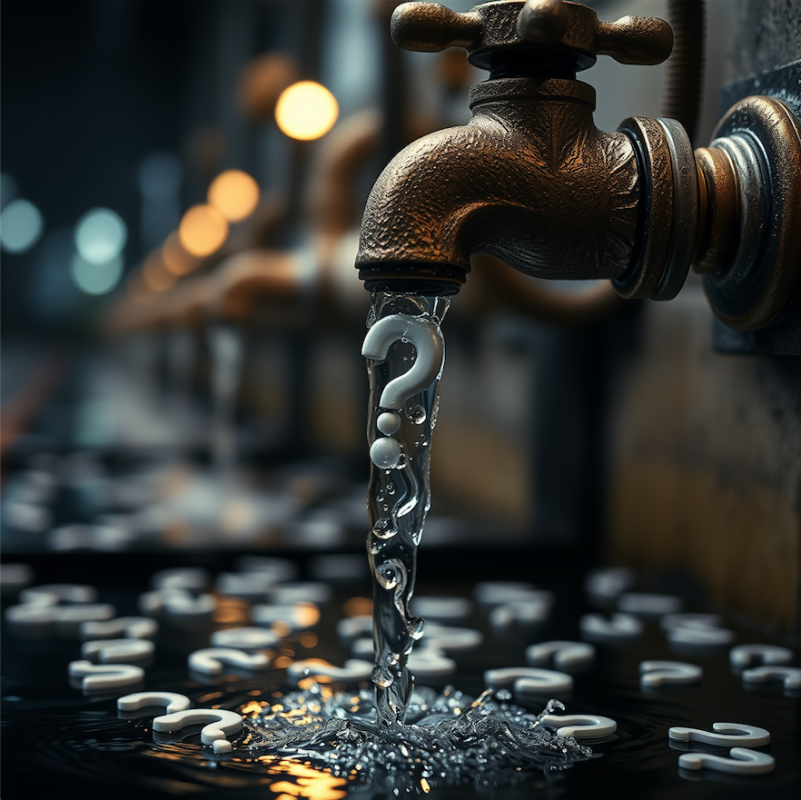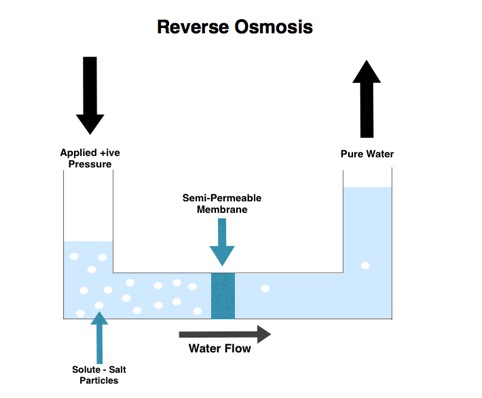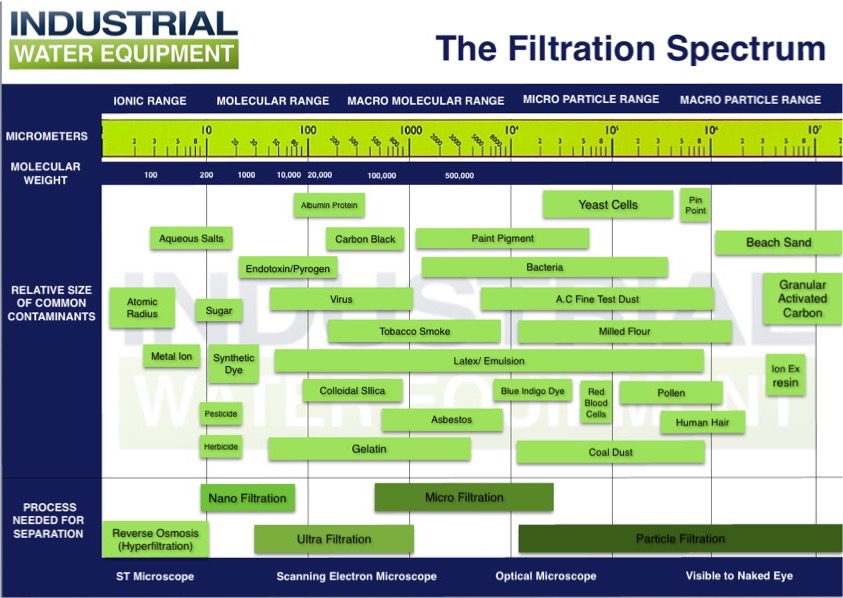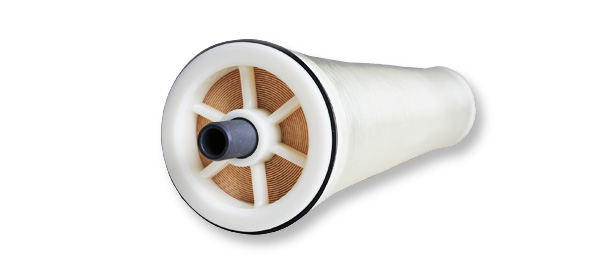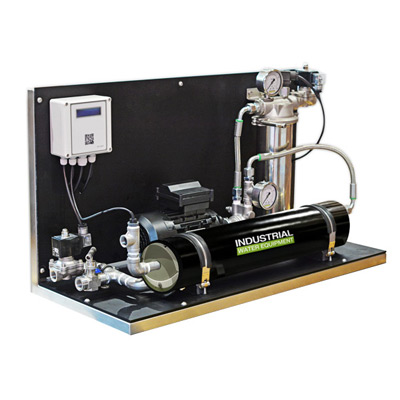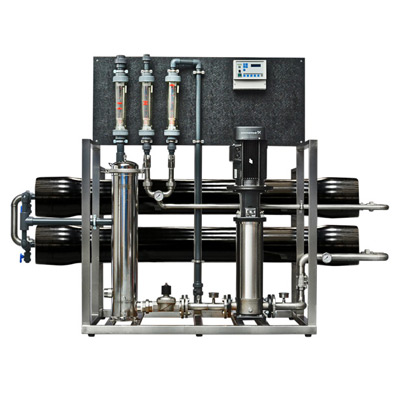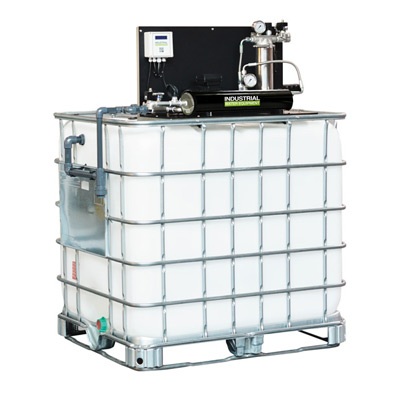Reverse Osmosis
Everything you ever wanted to know about Reverse Osmosis (RO)
Reverse Osmosis Explained
Being the people in the know for all things Reverse Osmosis, we get asked so many questions on a daly basis. We’re confident that we know the answers to pretty much any RO question and so we have decided to put together a list of some of the most common. See below-
1. What is Reverse Osmosis (RO)?
Reverse osmosis (RO) is a water purification process that uses a semi-permeable membrane to remove ions, molecules, and larger particles from water. In domestic applications, RO is used to purify drinking water. In commercial and industrial settings, it is used for high-purity water production, desalination, and wastewater treatment.
2. How does Reverse Osmosis work?
In RO, water is pressurised to force it through a semi-permeable membrane, which allows water molecules to pass while blocking contaminants. For industrial use, high-pressure pumps are often required to force water through membranes due to the large scale and high contaminant levels, whereas domestic systems use lower pressure.
3. What contaminants does Reverse Osmosis remove?
RO removes a wide range of contaminants including dissolved salts, heavy metals (e.g., lead, arsenic), organics, bacteria, viruses, and chemicals. In industrial applications, it is used to remove specific contaminants such as dissolved salts in desalination or to purify water for use in processes like boiler feed water or pharmaceutical production.
4. What is the difference between Reverse Osmosis and regular filtration?
Regular filtration typically removes larger particles (e.g., sediment) but cannot remove dissolved substances. RO is capable of removing contaminants as small as 0.001 microns, making it suitable for applications requiring ultra-pure water, such as semiconductor manufacturing, pharmaceutical production, and high-quality drinking water for domestic and commercial use (provided remineralisation filters are used) .
5. Is Reverse Osmosis water safe to drink?
Yes, RO water is safe to drink and is widely used in residential, commercial, and industrial water treatment. In domestic applications however, remineralisation should be added to improve taste and restore health benefits. In industrial settings, RO water is often demineralised for specific process requirements.
6. Does Reverse Osmosis remove beneficial minerals from water?
Yes, RO removes both harmful and beneficial minerals such as calcium, magnesium, and potassium. For drinking water systems (domestic and commercial), remineralisation filters are sometimes added to improve taste and ensure necessary minerals are retained. Industrial processes typically don’t require these minerals, and their removal is often necessary.
7. How much water does Reverse Osmosis waste?
Basic RO systems typically waste 10-15 litres of water for every 4 litres of purified water. Industrial systems can be optimised for a much higher efficiency, with advanced RO systems achieving waste ratios as low as 1:1 or less. In wastewater recycling applications, high-efficiency RO systems recover and reuse water, significantly reducing waste.
8. How much water can an RO system produce daily?
RO system capacity varies widely. Residential systems typically produce 50-100 gallons per day (GPD). Commercial systems can produce up to 10,000 GPD, while industrial RO systems are capable of producing several hundred thousand gallons per day or more, depending on the application.
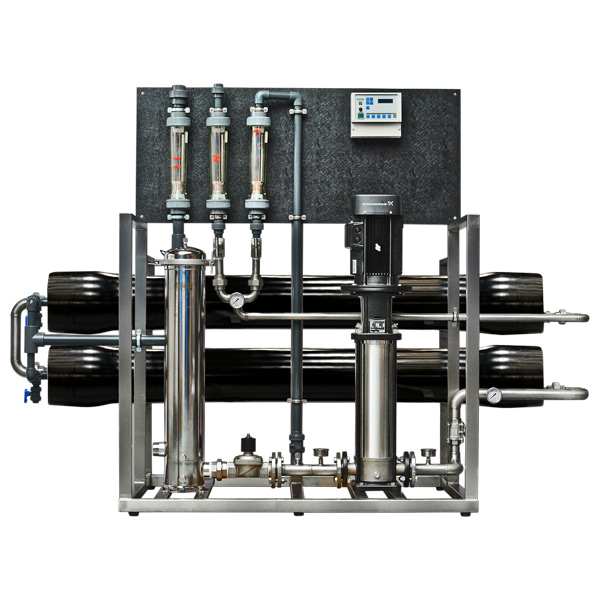
9. What is TDS (Total Dissolved Solids) and how does RO reduce it?
TDS measures the total concentration of dissolved substances in water. RO systems can reduce TDS by up to 99%, making it ideal for industries requiring low TDS levels, such as power generation (for boiler feed water), electronics manufacturing, or in potable water production.
10. Does reverse osmosis remove chlorine and fluoride?
Yes, RO removes chlorine, fluoride, and many other chemicals. In industrial applications, removing chlorine is essential as it can degrade the RO membrane. Pre-treatment with activated carbon filters is often used in commercial and industrial systems to protect the membrane from chlorine damage.
Installation and Maintenance:
11. How often should I replace the RO membrane?
Membrane replacement frequency varies with usage and water quality. In domestic and light commercial applications, the RO membrane typically lasts 2-3 years. Industrial RO membranes can last 3-5 years, though regular cleaning and maintenance are required to ensure optimal performance. High levels of contaminants can shorten the lifespan.
12. How long does a reverse osmosis system last?
With proper maintenance, RO systems can last 10-15 years. Industrial systems are designed for long-term operation but may require more frequent maintenance and membrane replacements due to high throughput and contaminant load.
13. Can I install a reverse osmosis system by myself?
Domestic and small commercial systems are often designed for easy installation and can be installed with basic plumbing skills. However, large commercial or industrial RO systems should be installed by professionals due to their complexity, requiring considerations for water pressure, chemical pre-treatment, and system integration. IWE has a team of highly trained professionals who have been installing water treatment equipment throughout the UK and Ireland for decades.
14. How much does it cost to install an RO system?
This question is quite impossible to answer definitively. Costs can range from £200 to £500 for a domestic system, £1,000 to £10,000 for commercial systems, and from £10,000 up to several hundred thousand pounds (or even beyond) for industrial RO systems, depending on the size, capacity, and complexity. Industrial installations also incur additional costs for pre-treatment and infrastructure.
15. Pre-filters (e.g., sediment, carbon) should be replaced every 6-12 months in domestic and commercial systems, while industrial systems may require filter changes more frequently, depending on water quality and system design. Post-filters, typically used in domestic systems for taste, are replaced annually.
16. How do I know when the filters need to be replaced?
Monitoring water pressure, flow rate, and TDS levels is essential for determining when to replace filters. Many industrial and commercial systems are equipped with automated monitoring systems and alarms to notify operators of required maintenance.
17. What maintenance is required for an RO system?
Routine maintenance includes replacing pre-filters, cleaning or replacing membranes, sanitising storage tanks, and monitoring pressure and TDS levels. Industrial RO systems may also require chemical cleaning of membranes and periodic system audits to ensure optimal performance.
18. What happens if I don’t replace the RO filters on time?
Failure to replace filters on time can lead to reduced water quality, fouling of the membrane, and decreased system efficiency. In industrial applications, this can result in costly downtime and potential damage to downstream processes or equipment.
19. Can an RO system be connected to my refrigerator or ice maker?
Yes, in domestic and commercial applications, RO systems can be connected to refrigerators or ice makers, supplying purified water. In industrial settings, RO is often integrated into process water systems for direct use in manufacturing, cooling, or other applications.
20. Why is there a tank in an RO system?
Domestic and commercial RO systems often include a storage tank to ensure an immediate supply of purified water, as the RO process is relatively slow. Industrial RO systems typically use larger storage tanks or are designed with continuous flow setups, depending on the application and demand.
Technical & Efficiency:
21. What is the recovery rate of a reverse osmosis system?
The recovery rate refers to the percentage of feed water converted into purified water. Domestic systems typically have recovery rates of 20-30%, while commercial and industrial systems can achieve recovery rates up to 50-75%, especially when equipped with energy recovery devices or multiple membrane stages.
22. How can I improve the efficiency of my reverse osmosis system?
Efficiency improvements include adding permeate pumps to reduce wastewater in domestic and commercial systems. Industrial systems can use energy recovery devices, advanced membrane technologies, or multi-stage systems to enhance efficiency. Regular maintenance and pre-treatment also prevent fouling and extend membrane life.
23. What pressure is required for an RO system to function properly?
Domestic RO systems typically require 40-80 psi. Commercial systems may require 100-200 psi, while industrial systems can operate at pressures as high as 1,000 psi for seawater desalination or high-concentration industrial processes. Booster pumps may be used to achieve optimal pressure levels.
24. Why is my reverse osmosis system running slowly?
Slow performance can be caused by clogged filters, low feed water pressure, or a fouled membrane. In industrial applications, scaling or fouling of the membrane due to inadequate pre-treatment can also lead to decreased flow rates.
25. Why does my reverse osmosis system have low water pressure?
Low water pressure may be due to clogged pre-filters, reduced feed water pressure, or a full storage tank in domestic and commercial systems. In industrial systems, low pressure can indicate pump failure, fouling of the membrane, or system design issues.
26. Can reverse osmosis water be acidic?
Yes, RO water tends to be slightly acidic because the process removes alkaline minerals. In domestic and commercial systems, post-treatment with remineralisation filters or pH adjustment systems is common. In industrial applications, pH adjustments are made based on process requirements.
27. Can RO systems remove bacteria and viruses?
Yes, RO systems remove most bacteria and viruses due to the size of the membrane pores (0.0001 microns). However, in critical applications like pharmaceutical or food industries, additional UV sterilisation or post-filtration may be used to ensure complete microbial safety.
28. Is a booster pump needed for my reverse osmosis system?
Domestic and commercial systems may require a booster pump if the feed water pressure is below 40 psi. Industrial systems often use high-pressure pumps, especially in desalination or large-scale water purification processes, where high pressure (up to 1,000 psi) is needed.
29. How does reverse osmosis impact the taste of water?
Reverse osmosis (RO) typically improves the taste of water by removing chlorine, chemicals, and dissolved solids that contribute to unpleasant flavours. In domestic and commercial applications, some users find RO water to be “flat” or lacking in taste due to the removal of minerals like calcium and magnesium. To improve taste and to improve health benefits, remineralisation filters should be added to restore natural minerals. In industrial applications, taste is less of a concern unless the RO water is used for beverage production or other sensitive processes.
30. What is the difference between single-pass and double-pass reverse osmosis?
In a ‘single-pass’ RO system, water passes through the membrane once, removing most contaminants. This is sufficient for domestic, commercial, and some industrial applications. Double-pass RO involves the permeate from the first pass being fed into a second RO unit for further purification, achieving even higher water purity. Double-pass systems are common in industries like electronics manufacturing, pharmaceuticals, or power generation where ultra-pure water is required, achieving conductivity levels as low as 0.1 μS/cm.


